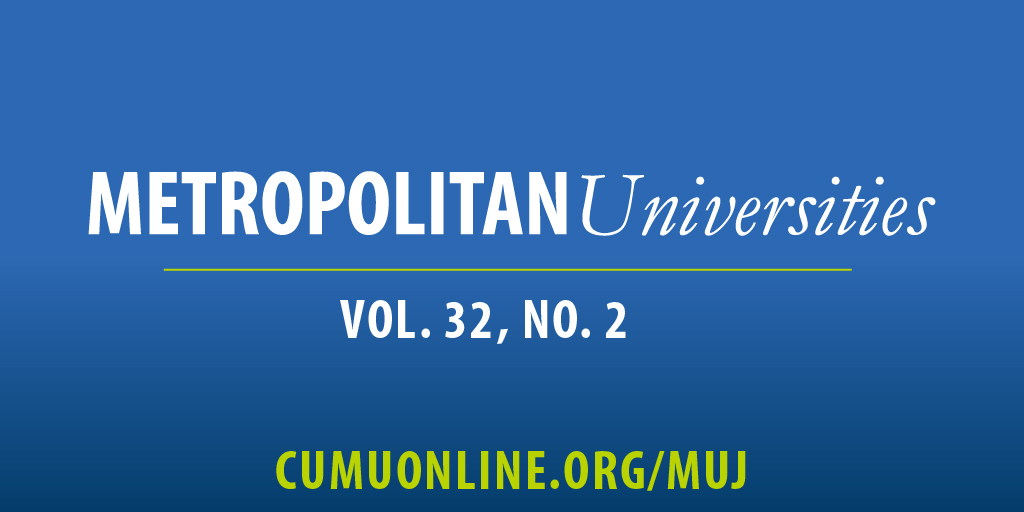Cultivating Innovation Capacity of Undergraduates in a Technology Commercialization Academy in Midwest America
DOI:
https://doi.org/10.18060/23931Keywords:
entrepreneurship , frameworks, sprint, feasibilityAbstract
The Technology Commercialization Academy (TCA) was launched to promote the identification, assessment, and exploitation of economically viable innovations by undergraduates and retain those graduates in the southwest Indiana region. Further, as part of the I-69 Innovation Corridor initiative, the TCA was part of increasing the regional Innovation Index score 20% by 2025. Through the seven years of implementation, the program has determined that there is a crucial tool set that is necessary for new graduates entering industry, including instilling that innovation is a balance; innovation is agile; innovation must fail, pivot, and focus quickly; and lastly the program must realize its capabilities, be diverse in thought, and recognize that the personnel are key. By instilling these practices in the participants, using available programmatic information and surveys, 100% of job seekers post-graduation were employed within six months, 9% began their own startup from the program, and 64% of these high impact graduates stayed in southwest Indiana. Overall, the TCA program structure has shifted to demand side iterative processes that create long-tail value for the region and made the participants attractive hires who are keenly aware of practices to move from opportunity to execution.
References
Bezerra, É. D., Borges, C., & Andreassi, T. (2017, 2017/10/01). Universities, local partnerships and the promotion of youth entrepreneurship. International Review of Education, 63(5), 703-724. https://doi.org/10.1007/s11159-017-9665-y
Biemiller, L. (2018). This University's 'Accelerator' Tests New Ideas for Teaching - and It's Working. The Chronicle of Higher Education.
Bogomolny, L. (2005). The Real Deal. Canadian Business, 78(6), 51-52.
Celuch, K., Bourdeau, B., & Smothers, J. (2014). Thinking Innovatively about Teaching Innovation And Ideation: Getting Students to Think Differently. Journal of Research in Innovative Teaching, 7(1).
Christensen, C. M., Cook, S., & Hall, T. (2005). Marketing Malpractice: The Cause and the Cure. Harvard Business Review, 83(12), 74-83.
Collet, C., & Wyatt, D. (2005). “Bioneering” – teaching biotechnology entrepreneurship at the undergraduate level. Education + Training, 47(6), 408-421. https://doi.org/10.1108/00400910510617033
Custer, N. (2015). IN Like Flint: How the Innovation Incubator at UM–Flint Fosters Social Entrepreneurship in a City Remaking Itself. Metropolitan Universities, 26(1), 53-70.
Economic Development Coalition of Southwest Indiana. (2019). https://www.southwestindiana.org/
GAGE. (2019). Growth Alliance Greater Evansville Economic Development. https://www.growthallianceevv.com/
Garcia, S. C., & Ustymchuk, N. (2020). Seeking Inclusion through Local Entrepreneurship Training Initiatives in Low-Income Communities. Metropolitan Universities, 31(2), 71-91. https://doi.org/10.18060/23810
Gilbert, D. (2010). INTEGRATING THEORY AND PRACTICE FOR STUDENT ENTREPRENEURS: AN APPLIED LEARNING MODEL. Journal of Enterprising Culture, 18(01), 83-106. https://doi.org/10.1142/s0218495810000495
Hanna, K. A. (2013). Campus and Community Connections: The Evolving IUPUI Common Theme Project. Metropolitan Universities, 24, 60 - 69.
Heinrich, B., Yaklin, B., Goodrich, D. J., & Knott, J. L. (2018). People, Practices, and Patterns: Transforming into a Learning Institution. Metropolitan Universities, 29(3), 85–107-185–107. https://doi.org/10.18060/21469
Innovation 2.0. (2019). Indiana Business Research Center. http://www.statsamerica.org
Johnson Jr, J. H. (2014). Public-Private Partnership, Entrepreneurship Strategy, and Regional Economic Development: A Case Study. Metropolitan Universities, 25(1), 5-38.
Jurkowski, O., & Kerr, S. (2010). Development of an educational innovation incubator. TechTrends, 54(2), 72-77.
Klugh, E. L., & Williams, R. C. (2017). Creating a University Driven “Ingepreneurial” Ecosystem in West Baltimore: A Strategy for Rust Belt Revitalization. Metropolitan Universities, 28(2), 103-123. https://doi.org/10.18060/21510
Knapp, J., Zeratsky, J., & Kowitz, B. (2016). Sprint: How to Solve Big Problems and Test New Ideas in Just Five Days. Simon & Schuster.
Luttrell, B. (2017). USI recognized for NSWC Crane partnership at Office of the Vice President. https://www.usi.edu/news/releases/2017/10/usi-recognized-for-nswc-crane-partnership-at-office-of-the-vice-president/
Ochs, J. B., Watkins, T. A., & Boothe, B. W. (2001). Creating a truly multidisciplinary entrepreneurial educational environment. Journal of Engineering Education, 90(4), 577-583. https://doi.org/10.1002/j.2168-9830.2001.tb00642.x
OPRA. (2018). 2017 Graduate Destination.
Osterwalder, A., & Pigneur, Y. (2010). Business Model Generation: A Handbook for Visionaries, Game Changers, and Challengers. John Wiley & Sons, Inc.
Tekula, R., & Jhamb, J. (2015). Universities as intermediaries: Impact investing and social entrepreneurship. Metropolitan Universities, 26(1), 35-52.
Thompson, D. (2012). Accelerating the growth of the next generation of innovators. Ohio State Entrepreneurial Business Law Journal, 8, 379 - 391.
Woods, S., Reed, B., & Smith-Howell, D. (2016). Building an engagement center through love of place: The story of the Barbara Weitz Community Engagement Center. Metropolitan Universities, 27(3), 84-105.
Downloads
Published
Issue
Section
License
Copyright (c) 2021 Arthur Chlebowski, William Hawkins, Stephanie El Tawil, Joshua McWilliams

This work is licensed under a Creative Commons Attribution 4.0 International License.



